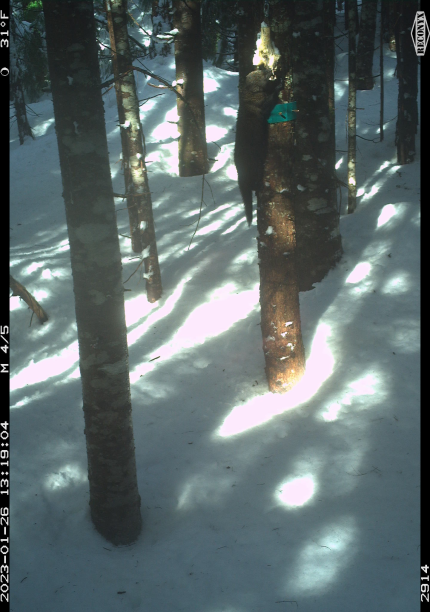Managing Wildlife Populations
Band-tailed Pigeon Surveys: Region 4 biologists conducted annual band-tailed pigeon surveys at select mineral sites from July 10 to July 20. These surveys are essential and influence the annual season and bag-limit frameworks for band-tailed pigeons.


North American Bat Monitoring Program Detector Deployments: Region 4 Wildlife staff members deployed overnight bat detectors at multiple sites throughout the region as a part of the North American Bat Monitoring Program. This is an ongoing continent-wide effort to monitor bat distribution and population trends.


White Nose Syndrome Treatment of Bat Maternity Colony: District 13 Wildlife Biologist Licence collaborated with the Diversity division, U. S. Geological Survey researchers, Snohomish County Public Works staff members, U. S. Fish and Wildlife Service biologists, private landowners, and volunteers to capture, measure, mark, and provide an oral white nose syndrome (WNS) vaccine to a mixed colony (predominantly Yuma Myotis) of bats in the Everett area. Over 100 bats were captured and treated and will be monitored by a solar powered pit tag reader system installed on the roost site to help determine efficacy of the treatment.


Lopez Island Bat Reconnaissance: District 13 Biologist Licence, joined by a Samish Indian Nation biologist, and a local non-profit research organization (KWIAHT) investigated bat roosts reported by partners and the public on Lopez Island. Information on bats on Lopez Island is limited and filling in these knowledge gaps are a priority for the district. Three new roosts for Townsend’s big-eared bats, big brown bats, and myotis species were documented on this visit. Additionally, guano was collected for myotis species identification.


Bumble Bee Surveys in Snohomish County: District 13, with the help of Diversity staff members, completed two-point count surveys and two habitat surveys at Goat Flats on Three Fingers Mountain. These surveys are associated with Pacific Northwest Bumblebee Atlas and are an effort to monitor bumble bee distribution, population trends, and important pollinator habitat associations.


Mountain Goat Surveys: Districts 13 and 14 wildlife biologists conducted mountain goat surveys in the Darrington and Mt. Baker areas. These surveys are typically flown annually to derive population estimates and assist with management by WDFW and tribal co-managers.



Fisher Surveys in King County: District 12, with the help of partners, took down cameras from monitoring stations targeting fishers. Learn more about WDFW efforts with fisher here.


Common Loon Management Efforts: District 12 put up new outreach signage developed with Communications and Public Engagement (CAPE) staff members and printed by partners at Campbell Global Timber Company.

Providing Recreation Opportunities


Fall Bear Hunt Opportunities: The Region 4 Private Lands Access Program team prepared a site in Whatcom County for public access during the month of August and early September for behind the gate vehicle access for bear hunters. This private timber land access opportunity relies on good behavior and rule compliance from the public. This bear hunting opportunity is accessed through the Hunt by Reservation system on WDFW’s website.
Summer Mowing: The Region 4 Private Lands Access Program team mowed several sites to reduce the prevalence of reed canary grass and make portions of properties better for waterfowl and waterfowl hunting.

Providing Conflict Prevention and Education


Assisting Deer in Distress: Local Conflict Specialist Seitz, Law Enforcement Officer Andrus, and Wildlife Biologist Moore responded to a report of a male deer in distress in Whatcom County. The buck’s antlers were entangled in heavy duty polyester garden netting which was limiting his ability to forage and move about naturally. The team immobilized the deer and removed the netting. Reports of the deer looking much happier have already been received from several residents.
Conducting Business Operations and Policy
